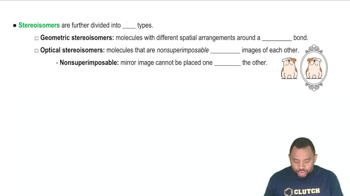Use the structure of D-galactose in Problem 6.15 to answer the following:
(a) Draw the Fischer projection of the carbon 3 epimer.
 Verified step by step guidance
Verified step by step guidance Verified video answer for a similar problem:
Verified video answer for a similar problem:



 3:33m
3:33mMaster Enantiomers vs Diastereomers Concept 1 with a bite sized video explanation from Jules
Start learning